THE FIGURATIVE WINDOW which held our weather forecast stood wide open, but nonetheless I was anxious. Prior to last week, I frolicked in the blissful ignorance of never having felt the contents of my stomach instantaneously liquefy while every inch of my skin erupted in icy beads of sweat. Never felt the boat launch wild figure 8’s beneath me until direction became relative and a vigilant eye to the horizon was the only thing reaffirming my faith in gravity.
Up until last week, I had not experienced sickness at sea.
Fortunately for me (and perhaps more fortunate for Erik) not a hint of sea sickness threatened to thwart our beautiful 300 mile sail south from Bahia de Tortuga to Magdalena. We were the picture of health, although I have to admit our stomachs did mildly protest at the immense volume of pork stew we were forced to consume over our 5 days at sea. Dreading another round of sea sickness and learning first hand how much food is prepared and consumed when one member of the crew is on watch for 36 hours and the other one is drooling into the stitching of the settee cushions, I decided to prepare our meals in advance. Unfortunately, I made the mistake of assuming, similar to our last sail, we would be ecstatic with anything edible as long as the minimal effort required to consume it amounted to ripping off the lid of a tupperware container and digging a utensil out of a drawer. I was wrong. On day 4, Erik fished the last rubbermaid out of the fridge, still brimming with a chilled concoction of limp vegetables and sinewy meat, and spooned it into a large stainless steel bowl at the bottom of our companionway steps. At least Nikka appreciated my meticulous over preparation.
On the morning of our 5th day at sea, the brown rocky headlands of Bahia Magdalena materialized out of the limited range of blue hues we had grown accustomed to over the past week. We were at once struck by the bay’s uncanny resemblance to a body of water we departed one sunny afternoon, over 3 months and 1,000 miles earlier. It felt as if we had been hurled back in time, catapulted by the Tardis, to a San Francisco Bay similar to the one the Spanish first encountered over 240 years ago. A time before resplendent, awe-inspiring bridges and clanging trolley cars, a time when the riches of the Sierra Nevada still lay concealed under the meandering water of rivers and thin mantles of vegetation. Catching a ride on the powerful tidal currents, we serendipitously arrived during flood tide, speeding through the entrance and finding ourselves on the outskirts of a vast, shallow bay. The strong northwesterlies followed us inside while the pesky ocean swell vanished, reminding us how lucky we were to have a large protected bay like San Francisco as a playground for an entire year.
We were flying through the water, it was good to be back.
After spending 24 hours in Magdalena, 20 of those hours spent horizontal, we were refreshed and eager to sail the final 140 miles to Cabo San Lucas, where we were hoping to replenish our stock of fruits and vegetables that had run out days earlier. On the way south we found ourselves battling that common cruiser’s adversary, time. In 48 hours our friends were landing in San Jose del Cabo, and we were cutting it close. Two days may have been no problem for Resolute close hauled or reaching, but Cabo lie directly downwind, and even with the wind blowing a steady 15 knots, we were moving slooooow. Not to mention the motion of Resolute on a monotonous downwind run in choppy seas is like a screen door flapping wildly in the wind, swinging squeakily on its hinges and crashing to a tumultuous halt at the limit of its springs before starting back again in the opposite direction. What we lacked in comfort was more than made up for in beauty, and instead of spending my night watches like I usually did, nestled into a book combating sleep with the aid of my watch alarm, I hung from Resolute’s stern arch awake and in awe of natures spectacle.
The moon shone round as a lollipop as it dripped a shimmering trail for us through the dark turbulent water, creating a scene more reminiscent of driving down a rutted Alaskan backroad than sailing the open ocean. The clouds were tiny puffs, flowing white in all directions until finally melting into the sea in the distance. The stars momentarily peeked out from behind the clouds, rewarding the patient observer with a quick glimpse before dissolving into the background. As I hung there with my mouth ajar, I was filled with an overwhelming appreciation for soggy foul weather gear, safety harnesses, and crushing exhaustion. I knew if I had not been on watch in the middle of the night more than 20 miles from the nearest land, I would have been sound asleep on some cozy pillow top mattress oblivious to the simple fact that a full moon hung heavy in the sky.

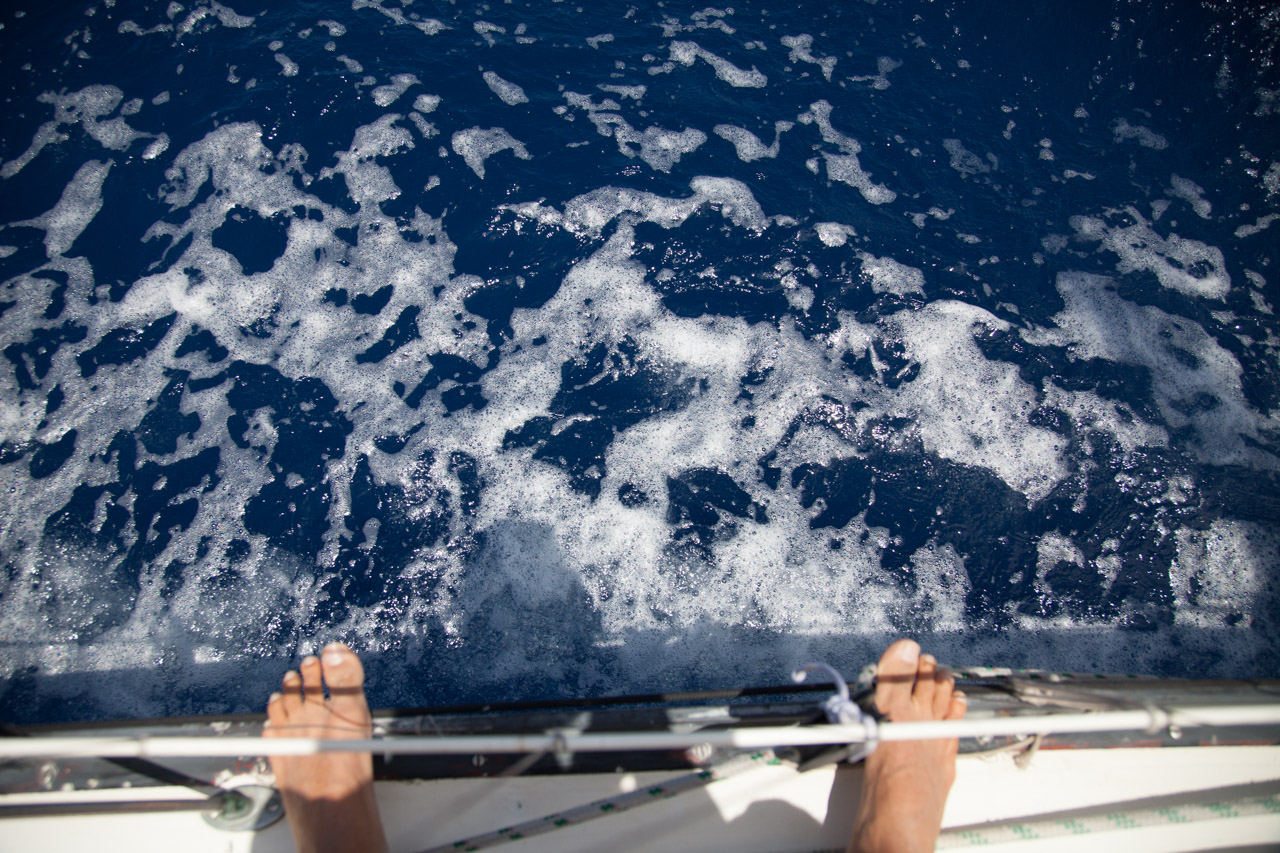
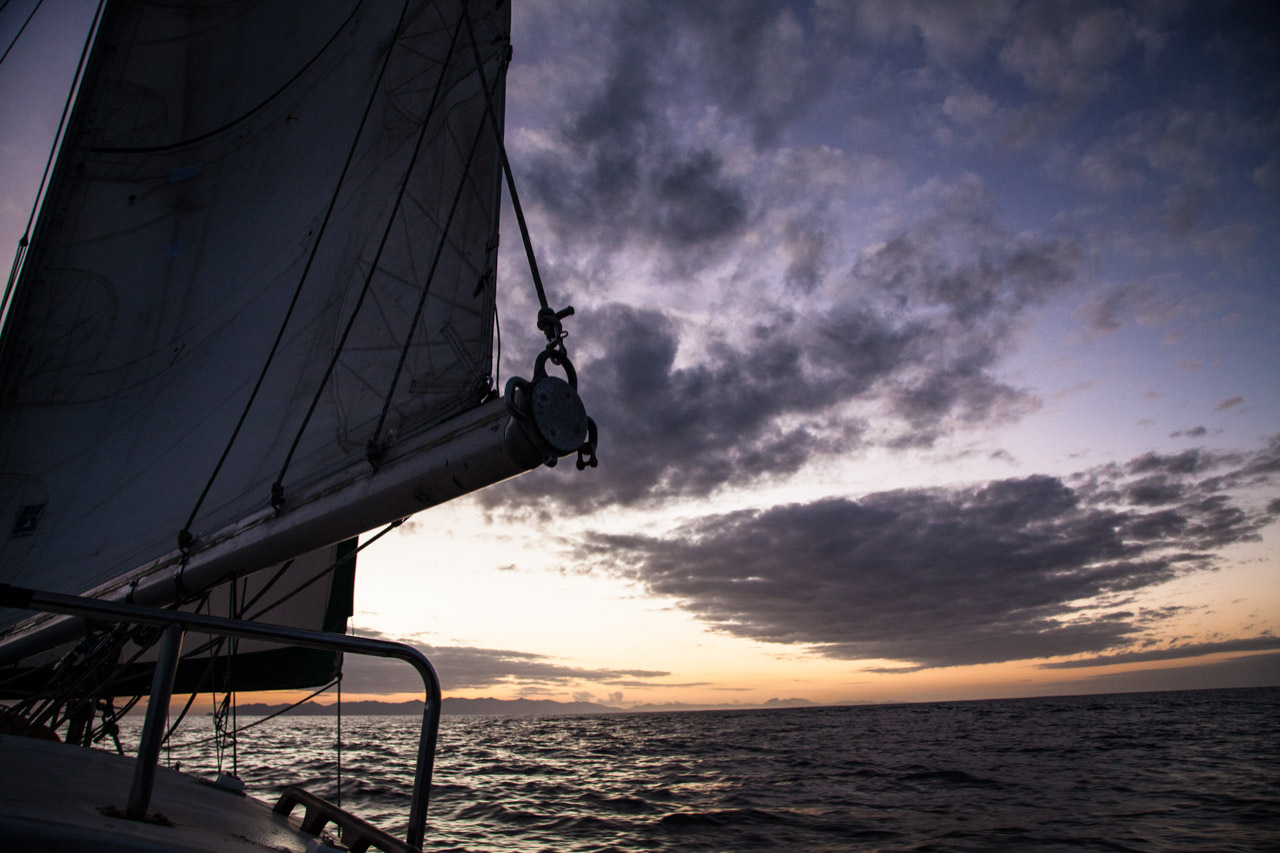
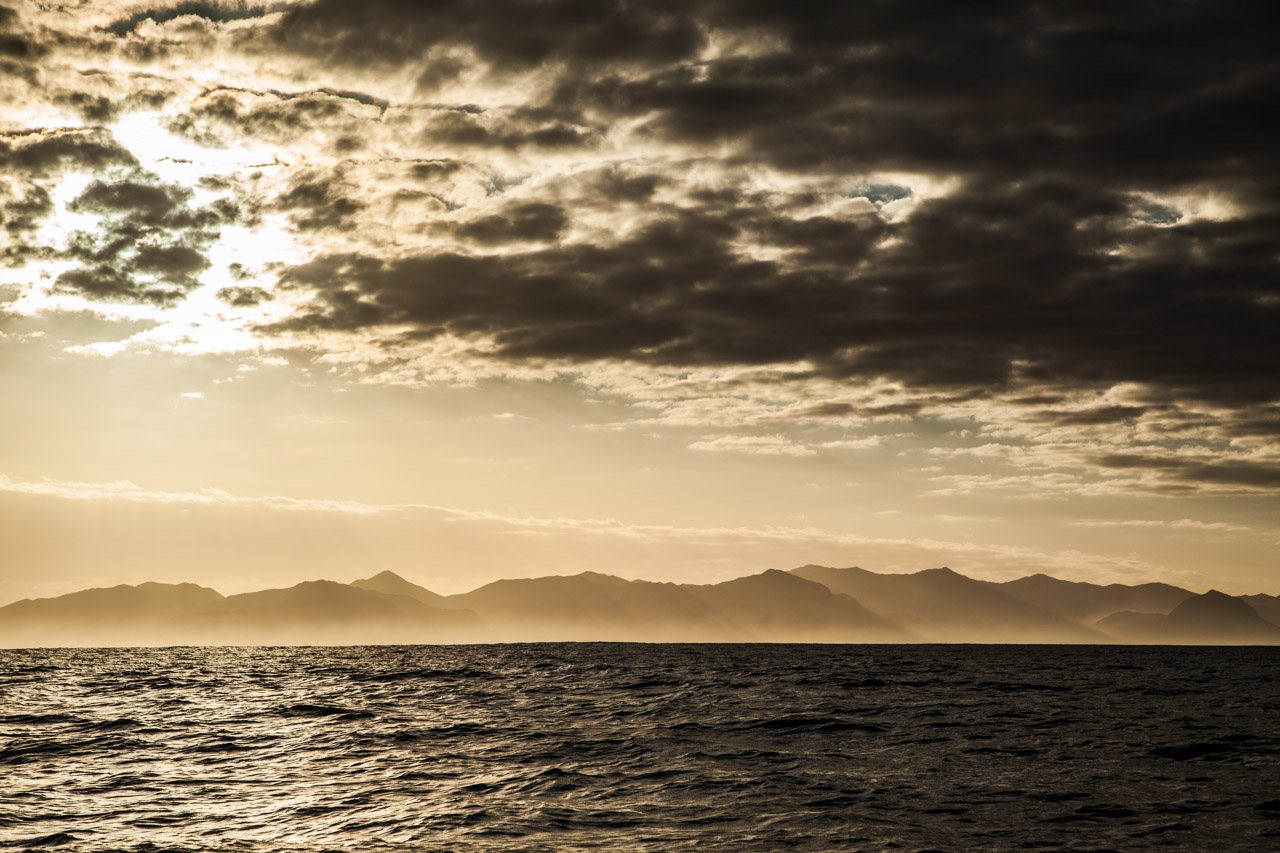
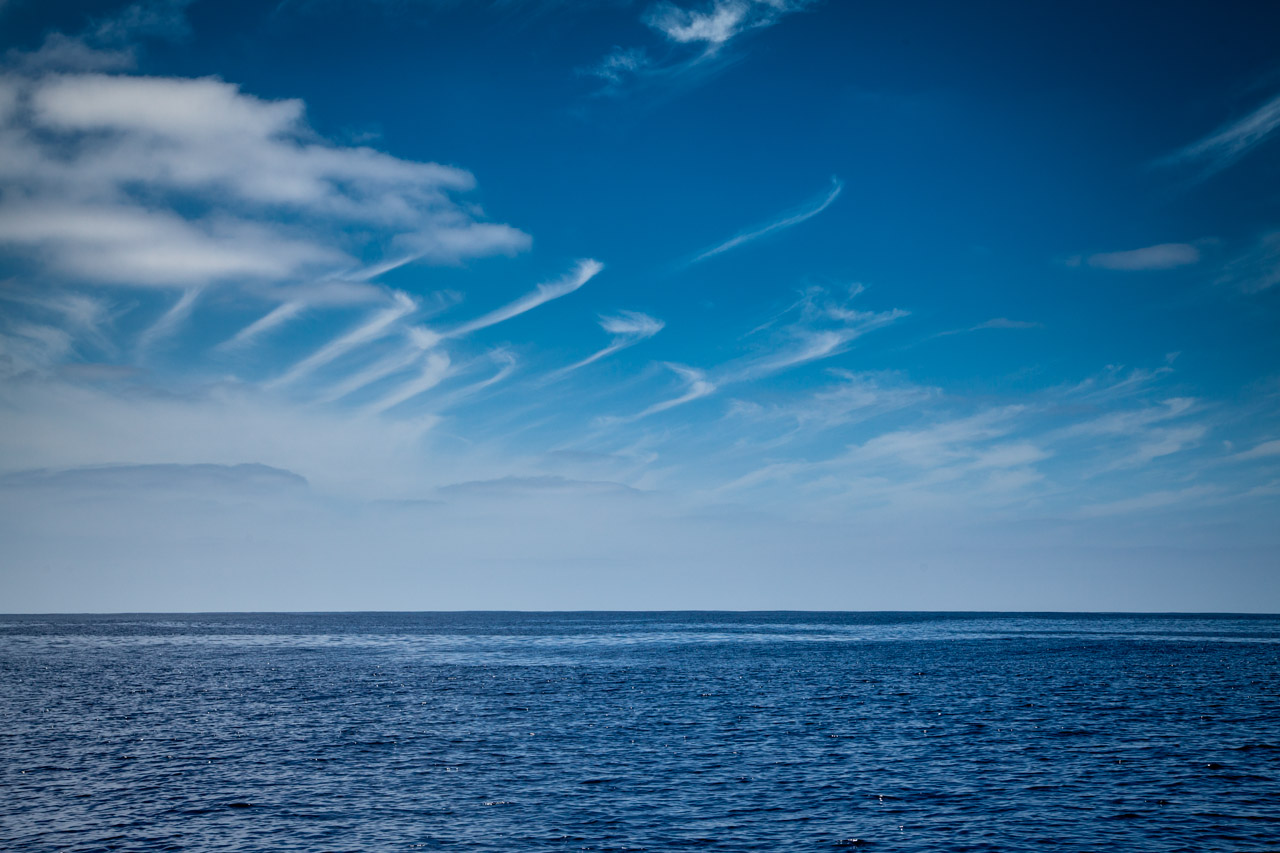
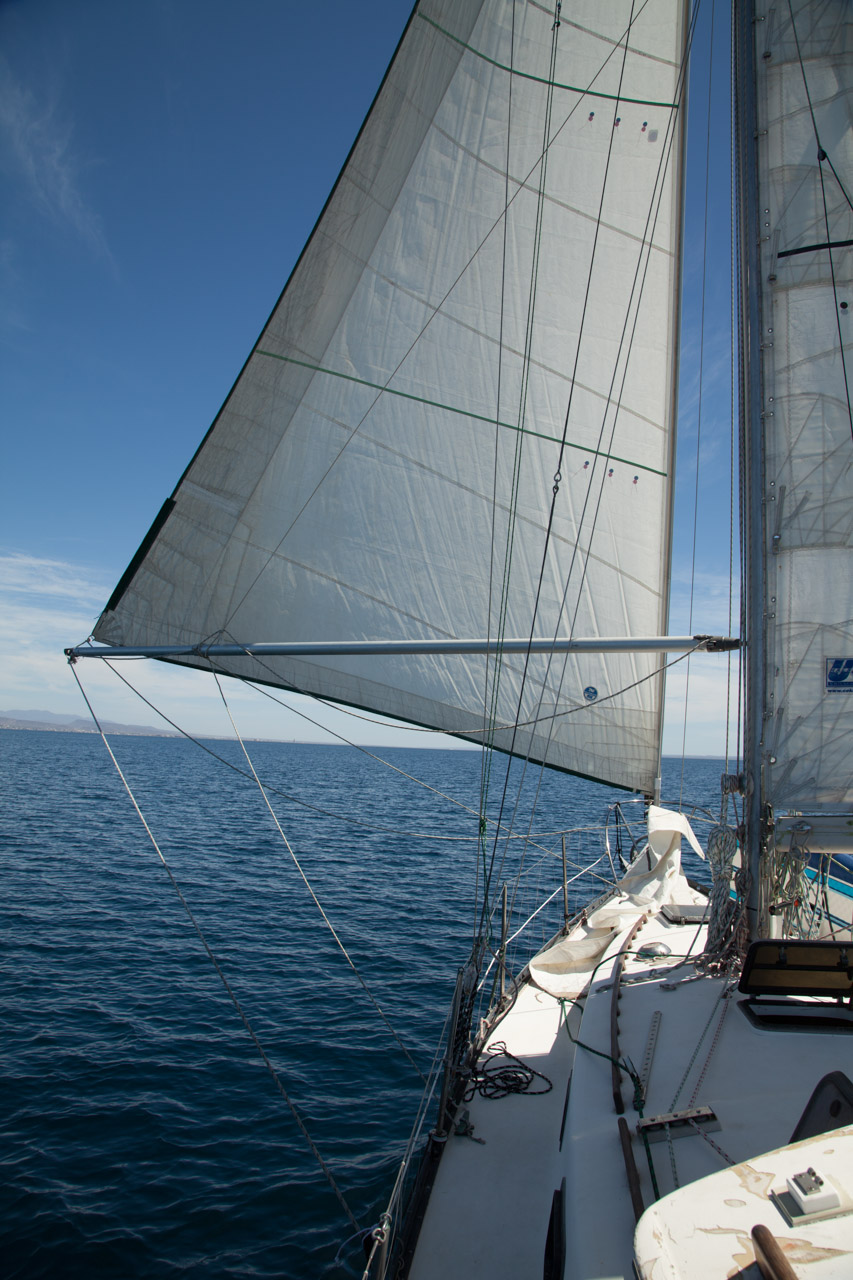



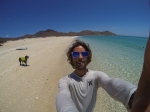


Another great entry on your epic adventure! LOVE IT!
Wish we could write more and post more often!
Enjoyed your description of seasickness and the night crossing, Also interesting the way you compare Bahia Magdalena to San Francisco bay. Good job writing. Enjoyed the pictures also.
Axel
Thanks! We really had quite a shock sailing into Magdalena. Maybe it was also due to delirium from lack of sleep? Glad to hear someone is reading and enjoying!